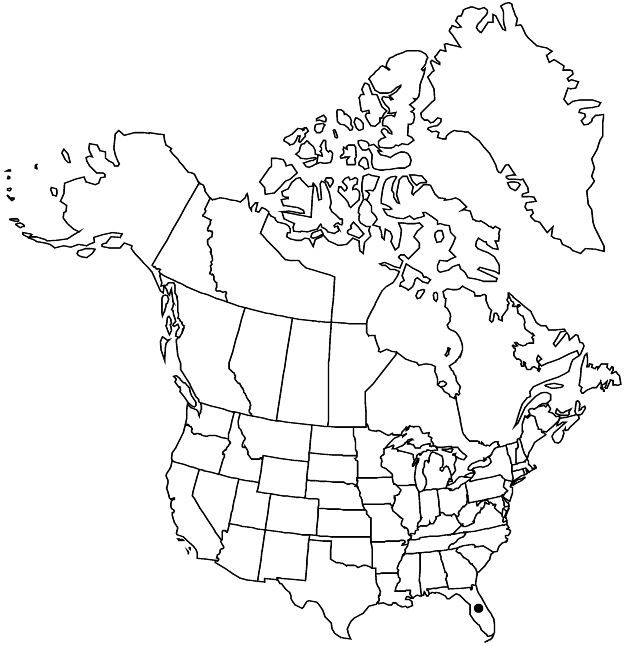Euphorbia conferta
J. Elisha Mitchell Sci. Soc. 62: 82. 1946.
Herbs, annual, with taproot. Stems prostrate, ascending, to erect, 10–45 cm, pilose. Leaves opposite; stipules distinct, subulate, 1–2 mm, pilose; petiole 0.9–1.5 mm, pilose; blade oblanceolate to elliptic, 3–10 × 1–4 mm, base asymmetric, obtuse to hemicordate, margins coarsely serrate, sometimes revolute, apex rounded to acute, abaxial surface sparsely hispidulous to strigillose (densely so on young leaves), adaxial surface glabrous; 3-veined from base but only midvein conspicuous. Cyathia solitary at distal nodes (appearing clustered at points of new growth); peduncle 0.4–0.6 mm. Involucre campanulate, 1.1–1.4 × 0.5–0.7 mm, pilose; glands 4, red, narrowly reniform, 0.1 × 0.2–0.4 mm; appendages pink to red, larger 2 petal-like, smaller 2 elliptic, 0.4–1 × 0.3–0.5 mm, distal margin erose. Staminate flowers 5–8. Pistillate flowers: ovary pilose; styles 0.4–0.8 mm, 2-fid at apex. Capsules conic or truncate-ovoid, 1–1.2 mm diam., pilose; columella 0.9–1.1 mm. Seeds orange-brown, glaucous, oblong, 4-angled in cross section, 0.7–0.8 × 0.4–0.5 mm, slightly rugose and with 3–4 transverse ridges.
Phenology: Flowering and fruiting year-round.
Habitat: Sandy, disturbed, wet areas, often roadsides.
Elevation: 0–10 m.
Discussion
Euphorbia conferta is known only from Broward, Miami-Dade, and Monroe counties in southern Florida.
Selected References
None.
